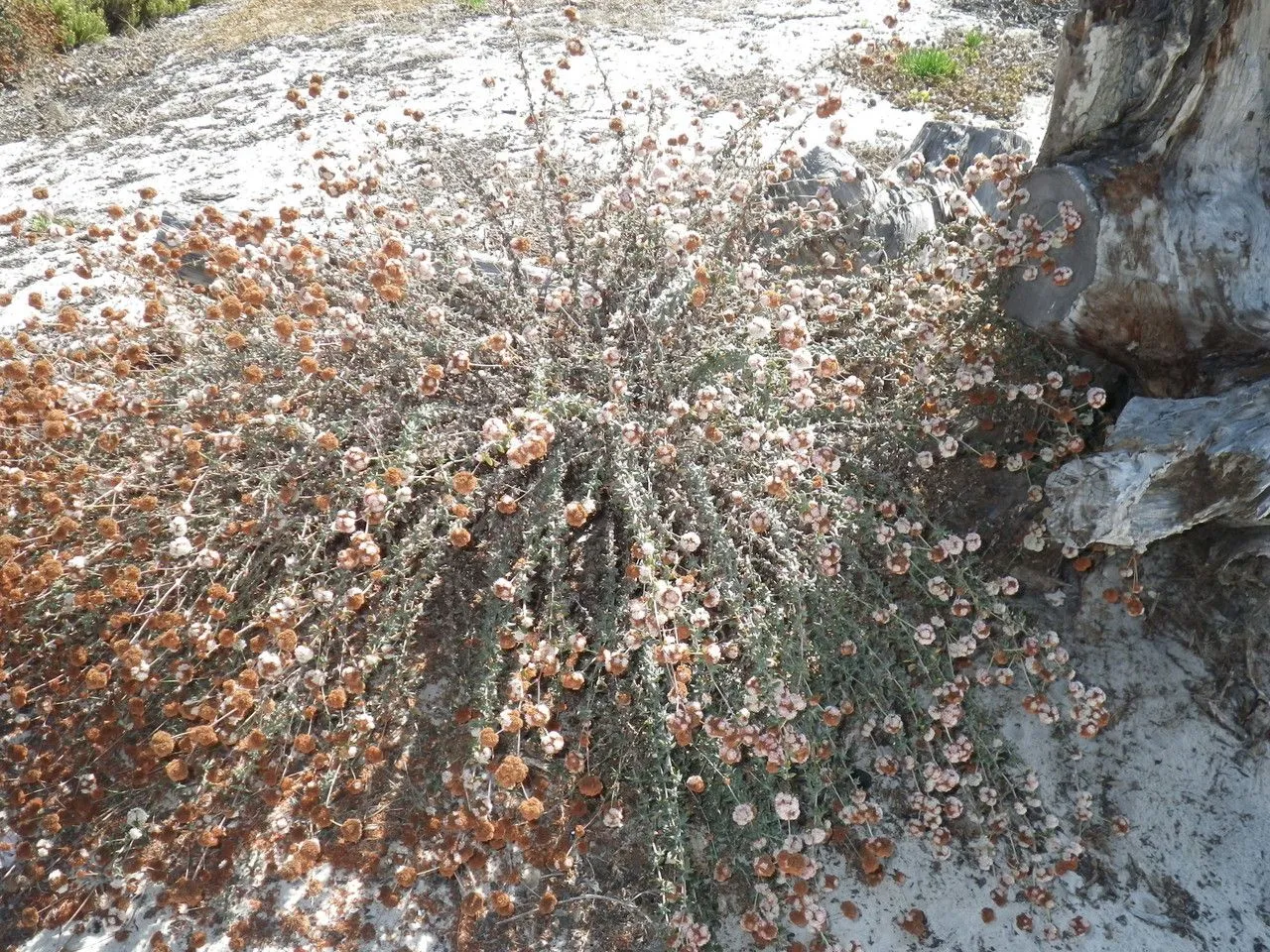
Author: Sm.
Bibliography: A.Rees, Cycl. 13: n.º 2 (1809)
Year: 1809
Status: accepted
Rank: species
Genus: Eriogonum
Vegetable: False
Observations: W. California
Seacliff buckwheat, scientifically known as Eriogonum parvifolium, is a species native to Western California. This resilient and beautifully adaptive plant is part of the Polygonaceae family, which is characterized by its diversity and adaptability across numerous environments.
Eriogonum parvifolium thrives in coastal habitats, showcasing its versatility and robustness. The plant is ideally suited to withstand the harsh conditions typical of seaside environments, such as strong winds, saline soils, and sandy substrates. This makes it an excellent choice for ecological restoration projects aimed at stabilizing soil and preventing erosion.
The foliage of the seacliff buckwheat is notable for its small, often hairy leaves, which contribute to its drought tolerance. These leaves are typically green on the top and white-beaten or felt-like beneath, adding to their distinctive appearance. During the blooming season, Eriogonum parvifolium produces clusters of tiny flowers ranging from white to pinkish hues, attracting a variety of pollinators, including bees and butterflies. This not only enhances local biodiversity but also supports the broader ecological network.
First recorded in the literature by A. Rees in 1809 under Cycl. 13: n.º 2, and authored by Sm., the seacliff buckwheat holds historical significance and has been a subject of botanical interest for over two centuries. Its enduring presence in the Californian landscape speaks to the plant’s adaptability and ecological importance.
In addition to its ecological roles, seacliff buckwheat serves as an excellent ornamental plant for drought-tolerant gardens, where its delicate blooms and hardy nature can be appreciated in managed landscapes. Gardeners and conservationists alike value Eriogonum parvifolium for its low maintenance needs and its ability to thrive in poor soil conditions where other plants might fail.
Overall, seacliff buckwheat is a remarkable plant that plays a crucial role in coastal ecosystems while offering aesthetic and practical benefits for human use. Its resilience, coupled with its ecological significance, solidifies Eriogonum parvifolium as an important species worthy of continued study and conservation.
Eng: seacliff buckwheat
En: Seacliff buckwheat
Taken Oct 11, 2015 by EOL − Don Loarie (cc-by)
Taken Jan 12, 2016 by EOL − James Bailey (cc-by-nc)
Taken Oct 12, 2015 by EOL − Dominic (cc-by)
Taken Oct 13, 2013 by EOL − Don Loarie (cc-by)
Taken Jul 28, 2022 by erin bushrlman (cc-by-sa)
Taken Nov 4, 2022 by Johnny Poppyseed (cc-by-sa)
Taken Aug 27, 2020 by andres amaya (cc-by-sa)
Taken Feb 12, 2020 by krommenhoek ian (cc-by-sa)
Taken Feb 24, 2015 by EOL − Zoya Akulova (cc-by-nc)
Taken Oct 13, 2013 by EOL − Don Loarie (cc-by)
Taken Aug 4, 2020 by Bertus Tempelaars (cc-by-sa)
Taken Feb 24, 1999 by EOL − Beatrice F. Howitt (cc-by-nc-sa)
Taken Oct 12, 2015 by EOL − Dominic (cc-by)
Taken Mar 4, 2014 by EOL − Eric Jacob (cc-by-nc)
Taken Oct 28, 2013 by EOL − Gena Bentall (cc-by-nc)
Taken Apr 8, 2014 by EOL − Gena Bentall (cc-by-nc)
Taken Feb 24, 2015 by EOL − Zoya Akulova (cc-by-nc)
© copyright of the Board of Trustees of the Royal Botanic Gardens, Kew.
Growth habit>: Shrub, Subshrub
Family: Myrtaceae Author: (F.Muell.) K.D.Hill & L.A.S.Johnson Bibliography: Telopea 6: 402 (1995) Year: 1995 Status:…
Family: Rubiaceae Author: Pierre ex A.Froehner Bibliography: Notizbl. Bot. Gart. Berlin-Dahlem 1: 237 (1897) Year:…
Family: Sapindaceae Author: Koidz. Bibliography: J. Coll. Sci. Imp. Univ. Tokyo 32(1): 38 (1911) Year:…
Family: Asteraceae Author: A.Gray Bibliography: Pacif. Railr. Rep.: 107 (1857) Year: 1857 Status: accepted Rank:…
Family: Fabaceae Author: Medik. Bibliography: Vorles. Churpfälz. Phys.-Ökon. Ges. 2: 398 (1787) Year: 1787 Status:…
Family: Aspleniaceae Author: (Cav.) Alston Bibliography: Bull. Misc. Inform. Kew 1932: 309 (1932) Year: 1932…